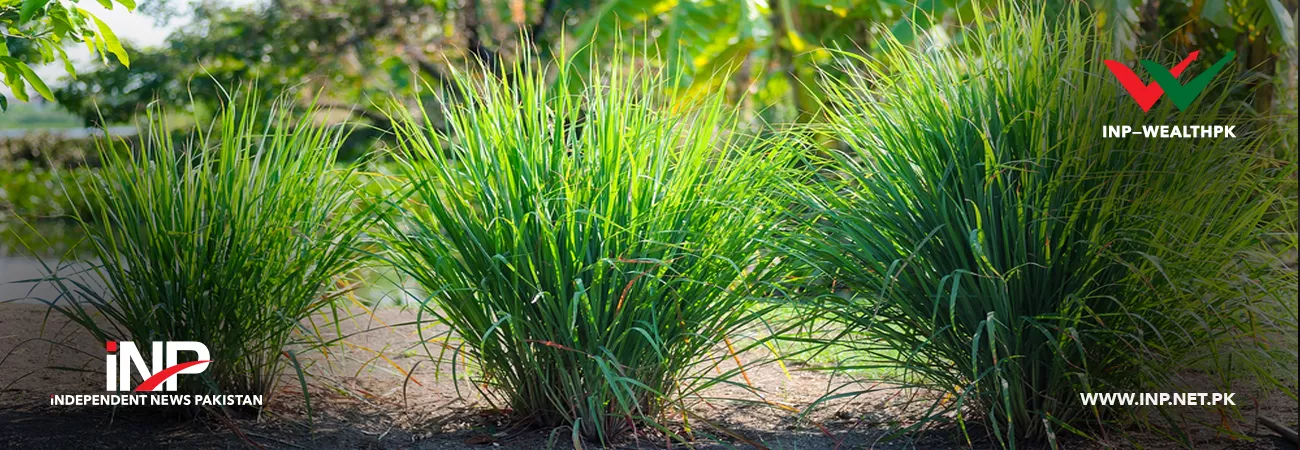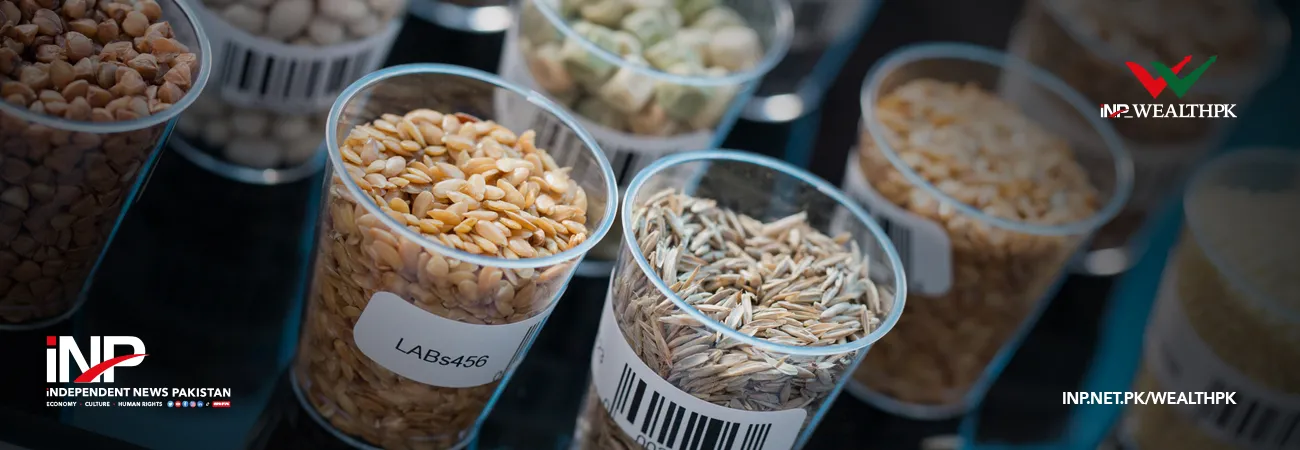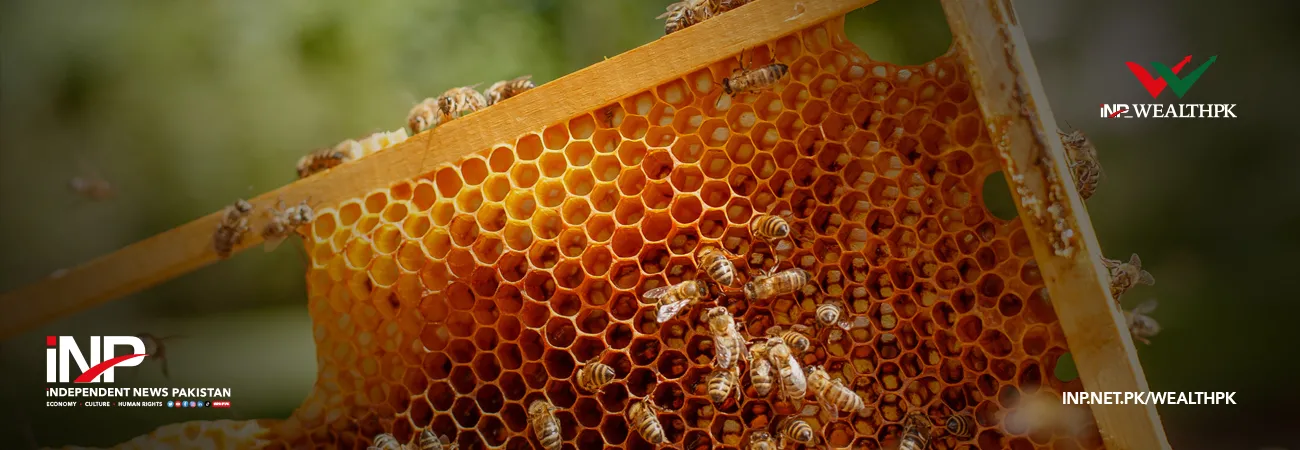INP-WealthPk
Faiza Tehseen
Vetiver grass or khus – a perennial bunchgrass of the family Poaceae most closely related to Sorghum – is worth its weight in gold from root to shoot on account of the associated socio-economic benefits. Its cultivation at the commercial level can fetch a handsome foreign exchange for the country. It is widely used around the world to address the problem of soil and water contamination, reports WealthPK.
Vetiver is a fast-growing plant with strong stems and a dense and deep root system that helps stop land erosion extensively. It originated in Southern India where it is known as the East Indian Grass/Khus in the local language. It can also be grown in water. It is considered a low-cost technology to conserve and stabilize polluted soil and water.
Vetiver was planted to test for rehabilitation of highly saline, sodic, alkaline, and magnesic coal mine tailings. It was also investigated for its potential use to rehabilitate gold mine tailings having high electrical conductivity and acidity. After sixteen weeks of monitoring, it was discovered that it had accumulated large amounts of metals in roots and restricted their translocation to the shoots.
From ancient times to date, vetiver roots are used to yield a fragrant oil which is widely used in cosmetics, soaps, culinary, scented candles, incense, and perfumery. Highly fragrant roots of vetiver are burned as incense and are also extracted to get essential oil. In aromatherapy, its oil is considered “the oil of tranquillity”.
The international vetiver oil market size is projected to reach US$126 million at the Compound Annual Growth Rate (CAGR) of 9% by the year 2030 from US$59 million in 2021 (taken as a base year).
Vetiver oil is also helpful in combating the symptoms of Attention Deficit Hyperactivity Disorder (ADHD) and decreasing mental fatigue. It is a good anti-inflammatory, antiseptic, aphrodisiac, nervine, cicatrizant, tonic, sedative, and vulnerary substance. It increases alertness, and skin cell regeneration. It reduces scars, acne, burns, pox, and blemishes by removing dead cells and nightmares. Its antioxidant properties increase collagen and cure dry scalp dandruff, irritation, and dull hair. Its water is good to cure intestinal tract. Its ready-to-drink green juice helps cool the body and hydrates it in scorching summers.
In a discussion with WealthPK about the valuable vetiver grass, Principal Scientific Officer (Plant Introduction and Seed Health Lab) from the National Agricultural Research Center (NARC) Dr. Riffat Tahira said, “It is a perennial grass/herb belonging to the Poaceae family and is known by the name of Vetiveria Zizanioides. Its roots contain majority of oils having both aromatic and biological properties. After uprooting vetiver, the roots are separated, washed and dried in shade for one to two days before extraction. Essential oils extracted from vetiver grass contain more than 100 constituents and further valuable contents can be obtained from them. About 3 to 4 tons of roots yield 15 to 16 kg oil.”
Dr Riffat said mostly vetiver oil was extracted through hydro-distillation, steam distillation, and solvent extraction. Its notes are described as warm and dry feeling conveying earthy, balsamic, leather, woody, earth, and smoky. Its oil is thick and golden brown, amber brown or olive in color. In Pakistan, the farmers must be made aware of the valuable non-traditional crops. They must emphasize to focus those, especially which are important for the ecosystem and can detoxicate the wastelands/waters, etc.
Principal Geologist in the Global Mining Company, Islamabad Muhammad Yaqub in a discussion with WealthPK said, “The mine tailings are thrown in water or on the land and these can be dangerous sources of toxic chemicals, such as heavy metals. No particular way of rehabilitation or stabilization has developed yet. It is a good option to cultivate vetiver on such heaps or in contaminated water to save the precious landmarks and water reserves.”
In a discussion with WealthPK, Instructor Floriculture from the Punjab Agricultural Department Naveed Ahmad said, “In developing countries, agricultural grasses i.e., vetiver, etc are the popular type of crops, especially for rural outreach programs due to the high value of essential oils extracted from them. Its roots form an intertwined network. Mostly, its propagation is done through slips. It can also be easily cultivated in arid areas. It is well tolerant in harsh environmental conditions and extreme soil types i.e., sands, gravels, and even toxic ones. It does not require large quantities of fertilizer or too regular pruning. It grows to 4 feet in 6 weeks and can be cultivated in ponds to turn them into a water feature to help the ecosystem.
Talking to WealthPK, Program Leader (Fodder and Forage) at the National Agricultural Research Centre (NARC) Zulfiqar Ali said, “Vetiver grass is a ‘cut and carry’ type feed product along with site grazing. It is a multi-cut crop as well that can be grown 4 to 5 times per year. It is handy in the months of fodder shortage (Dec-Jan, May-June). Being low in price, it can be used instead of chaff to mix with other fodders i.e., alfalfa and trifolium. It is not very nutritious but rich in fibre which is good for the digestive system of animals. It can be used in both dry and fresh forms. Unfortunately, it is not popular in Pakistan. It is a valuable non-traditional crop and there is a need to grow it as a regular crop.”
Credit : Independent News Pakistan-WealthPk













